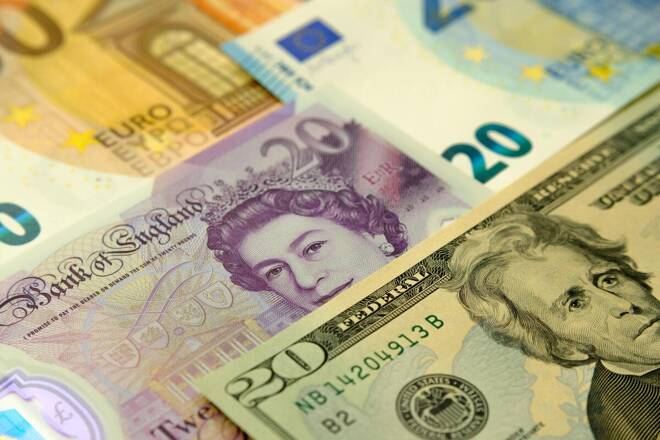Advertisement
Advertisement
GBP to USD Forecast: Bears Eye Sub-$1.27 on US CPI Report
By:
It is a big day for the GBP to USD, with the US CPI Report in focus. With recessionary jitters weighing on the Pound, hot US inflation numbers will impact.
Highlights
- It is a big day ahead for the GBP/USD, with the US CPI Report in focus this afternoon.
- Hotter-than-expected inflation numbers would reignite bets on a September Fed rate hike and tip the policy divergence scales in favor of the dollar.
- The nearer-term technical indicators are bearish, with sub-$1.27 in view.
On Wednesday, the GBP to USD fell by 0.23% to wrap up the day at $1.27186. Recessionary jitters left the GBP/USD on the defensive ahead of the UK GDP numbers tomorrow.
It is a quiet day ahead for the GBP to USD. There are no UK economic indicators for investors to consider. The lack of economic indicators will leave central bank commentary and inflation angst to influence ahead of the US session.
However, no Bank of England Monetary Policy Committee Members are on the calendar to speak today, leaving chatter with the media to move the dial.
The US Session
It is a big day ahead, with the all-important US CPI Report in focus. Hotter-than-expected inflation numbers would reignite bets on a September Fed interest rate hike, which could refuel recessionary jitters.
Economists forecast the US annual inflation rate to accelerate from 3.0% to 3.3% in July and for core inflation to hold steady at 4.8%.
Jobless claims figures will also draw interest. However, we expect the numbers to play second fiddle to the CPI Report.
While the Fed considers the Core PCE Price Index numbers a leading inflation indicator, the CPI Report carries significant weighting. The Fed is looking for inflationary pressures to ease significantly to take its foot off the gas. Wage growth and tight labor market conditions remain risks to the inflation puzzle.
GBP to USD Price Action
Daily Chart
The Daily Chart showed the GBP to USD sat below the $1.2785 – $1.2862 resistance band. Looking at the EMAs, the GBP to USD fell through the 50-day EMA ($1.27415) while holding above the 200-day EMA ($1.24547), sending bearish near-term but bullish longer-term price signals.
Notably, the 50-day EMA narrowed to the 200-day EMA, signaling further price losses.
Looking at the 14-Daily RSI, the 43.28 reading sends bearish price signals. The RSI signals a fall to sub-$1.27 to bring the $1.2520 – $1.2440 support band into view. However, a GBP to USD move through the 50-day EMA ($1.27415) would support a breakout from the $1.2785 – $1.2862 resistance band to target $1.29.
4-Hourly Chart
Looking at the 4-Hourly Chart, the GBP to USD hovers below the $1.2785 – $1.2862 resistance band. The GBP to USD also sits below the 50-day ($1.27638) and 200-day ($1.27851) EMAs, sending bearish near and longer-term price signals.
Significantly, the 50-day EMA pulled back from the 200-day EMA, a bearish price signal. However, a GBP to USD move through the EMAs would support a breakout from the $1.2785 – $1.2862 resistance band to give the bulls a look at $1.29. Failure to move through the 50-day EMA would leave sub-$1.27 and the $1.2520 – $1.2440 support band in play.
The 14-4H RSI reading of 42.96 sends bearish signals, with selling pressure outweighing buying pressure. Significantly, the RSI signals a fall to sub-$1.27 to bring the $1.2520 – $1.2440 support band into play.
About the Author
Bob Masonauthor
With over 28 years of experience in the financial industry, Bob has worked with various global rating agencies and multinational banks. Currently he is covering currencies, commodities, alternative asset classes and global equities, focusing mostly on European and Asian markets.
Advertisement
